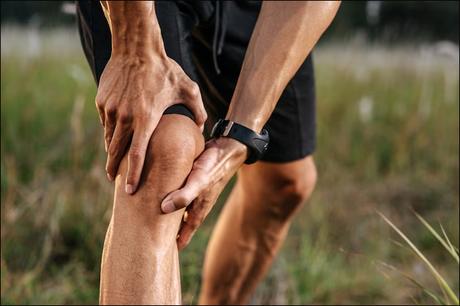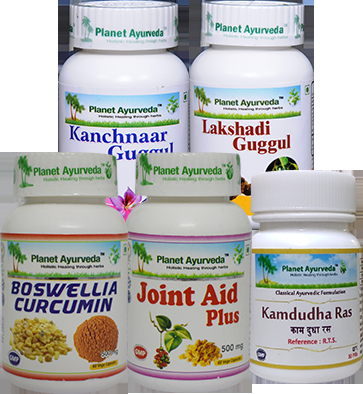Abstract
This curious condition of uncertain nature can be best characterized as a proliferative lesion of joints and tendon sheaths, marked by hemosiderin deposition within villous overgrowths of synovium. The synovial overgrowth may be sufficient to induce tumor-like masses which project into the joint or tendon sheath spaces. Indeed, as will be seen, one view holds that this lesion is basically neoplastic. It occurs as a localized process in tendon sheaths, but in joints the entire synovial lining is usually involved, particularly in the knee and less often the hip. Occasionally, lesions are found in periarticular tissues, presumably arising within sub-synovial connective tissue. Females tend to be affected slightly more often than males. Frequently, it leads to effusions into the joint spaces or tendon sheaths, accompanied by pain, swelling, and sometimes locking of the joint. Only the knee is involved in 80% of patients. It occurs usually in adults between 20-50 years of age. Today we will read about pigmented villonodular synovitis in brief in this article.
Introduction
Pigmented villonodular synovitis is a progressive condition in which proliferative lesions of joints and tendon sheaths are caused due to overgrowth of synovium. The mass is non cancerous and does not metastasize to other body parts. Grossly, the lesion in tendon sheaths takes the form of a small, ovoid swelling, rarely greater than 3 cm in diameter which on transection is usually golden-yellow to red-brown, depending on the amount of contained lipid and hemosiderin. In joint spaces, more or less of the entire synovial lining is transformed into a tangled mat by numerous sessile or villous projections. Sometimes discrete, yellow-brown nodules having the appearance of neoplasms develop either within the thickened synovial membrane or as pedunculated lesions
Cause
- The exact cause is unknown. It can be caused by CSF1 gene over-expression.
- Genetic mutations of chromosome 1p13 and rearrangement of 5q33 chromosomal.
- Associated conditions like giant cell tumors of tendon sheath.
Pathogenesis
The pathogenesis of this lesion is completely obscure. It has been viewed variously as:-
- A neoplastic process
- As inflammatory in origin, although no specific agents been isolated
- As a localized disturbance of lipid metabolism leading to accumulation of lipids within phagocytic cells with secondary traumatic changes
- As an obscure overgrowth of synovial and peri synovial cells.
The fact that the lesion frequently recurs following incomplete excision has been taken as evidence for a neoplastic origin, but such behavior does not rule out other possible origins. We must leave it that this disabling but not life threatening condition is still a complete enigma.

Symptoms
- Swelling and pain in joints which are affected
- Locking of the joint
- Stiffness in joints
Diagnosis
- Physical examination:- Inspection of joints to check joint effusion, erythema, tenderness and motion of affected joint.
- X-ray:- It may show periarticular mass, soft tissue swelling and cystic erosion of joints.
- Magnetic resonance imaging:- It shows excellent pictures of delineation of both extra-articular and intra-articular disease.
Treatment
- Medical:- Use of CSF-1 receptor antagonist
- Surgery:- Partial synovectomy/complete synovectomy is done.
Ayurvedic overview
In ayurveda, pigmented villonodular synovitis's symptoms nearly resemble Kroshtukasheersha which is described in sushruta samhita nidansthana vatavyadhi chapter shloka 76. In this disease mainly vata and rakta are involved.
वातशोणितज: शोफो जानुमध्ये महारुज:। शिर:क्रोष्टुकपूर्वं तु स्थूल: क्रोष्टुकमूर्धवत ।। (सु. सं .नि .1/76)According to the above shloka:- In knee joint vikriti (imbalance) of vaat and rakta develop severe pain and swelling which is known as Kroshtukasheersha.
Vata dosha gets aggravated with above mentioned factors which lead to occupied vacant channels. On filling the vacant spaces, the aggravated vata develops many diseases like it may be limited to a particular area or affecting the whole body that is vatavyadhi.
Treatment
- Raktamokshana (blood letting therapy):- In this therapy impure blood is expelled out from the body by using horns, leech, multiple pricking, gourds etc.
- Purgation:- This therapy is done by herbs in which toxins are expelled out from the body.
- Fasting therapy:- It brings lightness in the body.
- Raktashoshan (blood purification)
- Neem:- This is bitter and astringent in taste. It is always kapha and pitta but aggravates vata. It is light and cold in effect. Due to these properties it purifies the blood and prevents skin from acne, pimples, allergies, etc. It reduces the toxin level in the body.
- Turmeric:- It contains bitter and pungent properties. It is light, dry and hot in effect. It is helpful in blood formation along with blood purification.
- Manjishtha:- It is bitter and astringent and sweet in taste. It is heavy, dry and hot in effect but it is a pacifier of kapha and pitta. It helps to gain lusture and glow to the skin and aids to remove pimples, freckles and discoloration. It also promotes the healing of skin tissues damaged by injury or infection.
- Daruharidra:- It is bitter and astringent, light, dry and hot in effect. It reduces inflammation and pain. It is a wound healer.
Herbal remedies for pigmented villonodular synovitis by planet ayurveda
Planet ayurveda provides various ayurvedic medicines for different kinds of diseases. They made various types of formulation by following all the principles of ayurveda in ancient textbooks. These ayurvedic medicines are GMP certified and are safe for the human body. All the formulations are made from pure herbs which are highly effective in the human body and free from harmful chemicals, preservatives, yeast or additives. Planet ayurveda provide herbal remedies for pigmented villonodular synovitis:-
- BOSWELLIA+CURCUMIN
- JOINT AID PLUS
- LAKSHADI GUGGUL
- KANCHNAAR GUGGUL
- KAMDUDHA RAS (MOTI YUKT)


Product Description
1. Boswellia+curcumin
It is a poly herbal capsule made from shallaki (Boswellia serrata) and haridra (curcuma longa). Boswellia have anti-inflammatory features which stop the cytokines secretion and reduce inflammation or swelling. Curcuma longa has an antioxidant property which protects brain neurons and reduces the wrinkles on skin. It purifies the blood and helps in blood formation in the body. It also applies on cuts and bruises because it is a natural antibiotic. It prevents colon and skin tumors. It is known as antibacterial, anti-allergic, carminative and diuretic medicine. It is an effective remedy for sprains, wounds and inflamed joints.
DOSE:-2 capsule twice daily, after meals with plain water.
2. Joint aid plus
It is a polyherbal capsule formed from nirgundi (vitex negundo), shallaki (boswellia serrata), guggul (commiphora mukul), etc. It is bitter in taste but hot in effect. It has qualities to pacify all three doshas in the body (vata, pitta and kapha). It is light, dry, sharp and unctuous. It contains calcium, magnesium, iron and silicon dioxide. It is a very potent medicine for various types of joint problems such as rheumatoid arthritis, osteo arthritis and gout. It helps in reducing pain, swelling and tenderness of the inflamed joints. It has anti-hypercholesterolemic properties. It lowers serum triglycerides and cholesterol levels. It is an antioxidant and immune-modulator. It prevents all types of weakness and increases one's strength and stamina. It induces sound sleep.
DOSE:- 1 Capsule twice daily
3. Lakshadi guggul
It is a herbal tablet made from laksha (laccifer lacca), arjuna (terminalia arjuna), ashwagandha (withania somnifera), etc. It is bitter and astringent in taste. It is dry, cold and light in effect. It is also a pacifier of kapha and pitta. It contains calcium, magnesium, aluminium etc. it is healer of wounds, antibacterial, antifungal and antipyretic. It is beneficial for heart diseases. It helps in excessive palpitation due to anxiety. It helps bones to regain strength after fractures. It contains anti-anginal properties. It is anti inflammatory as well anti-lipemic.
DOSE: - 2 tablets twice with lukewarm water
4. Kanchanaar guggul
It is a herbal tablet which is formed from kanchanar bark (bauhinia variegata), amalaki (emblica offinalis), haritaki (terminalia chebula), etc. It is bitter and astringent in taste but hot in effect. It has a strong antioxidant which reduces toxins from the body. It contains magnesium, calcium, vitamin B, iron, vitamin C, proteins and dietary fibre. It is effective in relieving pain. It reduces swelling and stiffness of joints. It helps in purification of blood and regulates the level of cholesterol. It improves the menstrual cycle in females.
DOSE:- 2 tablets twice daily with lukewarm water
5. Kamdudha ras (Moti yukt)
It is a classical ayurvedic pills made from giloy satva (tinospora cordifolia), mukta shukti bhasma (pearl oyster), shuddha gairik (red oxide of iron), etc. It pacifies all the three doshas. It is cold in effect. It acts as an anti inflammatory, antipyretic, anti arthritic, a blood purifier, antacid, antiemetic, etc. It decreases the heat level in the body and balances the production of acid in the stomach and decreases the inflammation of the organs. It is helpful in nausea, vomiting, and improving appetite. It inhibits gastric ulcers. It helps in treating white discharge from vagina in females. It is a rejuvenator and a restorative tonic.
DOSE:- 2 Pills twice daily
Contact Planet Ayurveda Support Team to provide you the costing / ordering and delivery information at - [email protected] or Call at 0172-521-4030 (India), +91-172-521-4030 (Outside India) or Whatsapp at (+91) 9915-593-604Conclusion
Pigmented villonodular synovitis is a progressive condition in which proliferative lesions of joints and tendon sheaths are caused due to overgrowth of synovium. In ayurveda it is caused by vitiation of vata and rakta. In ayurveda we can manage this condition by various methods like blood purification by leech, horns etc. and by herbs like curcuma longa, neem, manjistha, daruharidra, etc.

